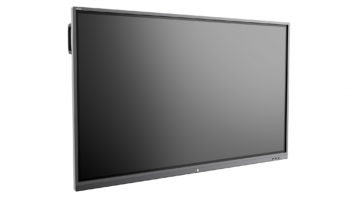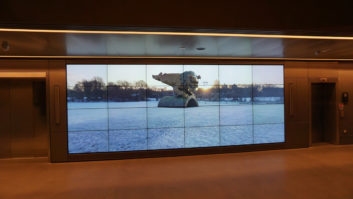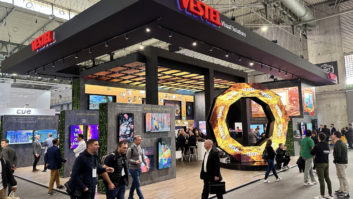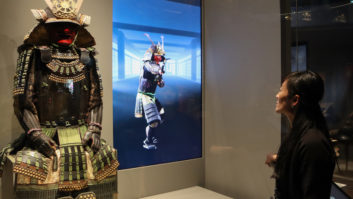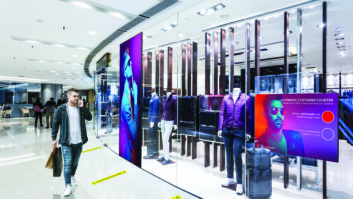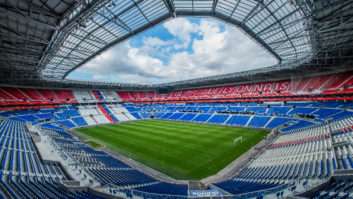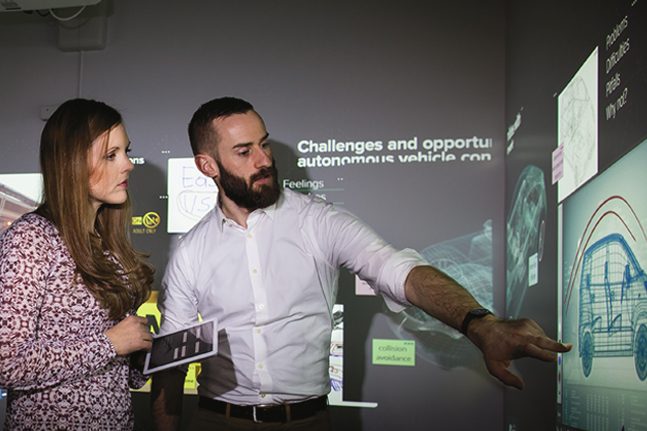
In the first half of this interactive display feature we looked at the technology developments and different target markets. Here Steve Montgomery considers the changing role of the integrator and what the future is for touch technology.
AV system integrators are in a unique position to understand the complexities and application of interactive technologies in today’s markets. As vendors increasingly package hardware and applications together there is little scope for dealers and installers to generate revenue from a sector once so fruitful to them. “There are still opportunities to add value and deliver a back-to-basics approach on helping users through the minefield of choices and options,” says Jeremy Stewart, director of U-Touch. “There are always higher-margin niche market opportunities and a sector I believe in is large-format LCD and LED videowalls. There are a number of interactive solutions and touch interfaces available to convert videowall systems into interactive displays. This, in turn, opens opportunities to supply content, installation, support and service. Vendors such as NEC are also targeting this sector offering standard SKUs to assist SIs and resellers with sourcing.”
David Wilson, workplace consultant director at Engage Works, identifies an additional opportunity: ��Interactive technology is just an enabler and needs to be supported by great content with a purpose. There is a role for integrators to facilitate relationships and introductions to good content developers who understand the whole human-machine interface across ages, experience and comfort.”
Wilson predicts that the whole concept of interactivity will change in the future as users become more familiar with non-touch technology, including voice and gesture interaction with applications. “I expect that a universal gesture command language akin to pinch-and-zoom on a touchscreen will start to develop with machines able to decipher what is an intended gesture and what was just gesticulation. Then the interface can take on a more distant relationship and offer up a greater range of opportunities, such as being able to interact with digital bill posters located high up in shopping centres or on the other side of the tube tunnel.” He also predicts that “voice input will become more prevalent as people become more comfortable with speaking to a machine. This is already happening through interactive tools and devices like Siri, Cortana and Alexa.”
Gesture input is already built into collaboration solutions provided by Oblong Industries. “The ability to interact with Mezzanine from anywhere in the room with a gestural wand, tablet or web browser, and being able to facilitate, participate and control the meeting remotely creates an environment conducive for group collaboration,” says Steve Pryor, director, EMEA channel sales, Oblong Industries. “Mezzanine enables faster decision making, fostering a highly productive working environment.” He believes that there is a need to operate over several rooms at once. “Unlike traditional interactive displays that just focus on the in-room experience, Mezzanine replicates multiple interactive display surfaces between rooms using ‘Infopresence’, with many input data sources, and delivers that experience through mobile devices to really meet our customer demands.”
The rapid evolution of interactive display technology, coupled with lowering product cost, physical size and ever-advancing human interface software and techniques have come together to offer solutions that are exciting users around the world; not just in enhancing meeting efficiency, connectivity and collaboration, but in generating new business opportunities. Mandeep Jawa, PwC’s director of emerging workplace technology, summarises the benefits to PwC of seamless connection between multiple interactive screens and personal devices using touch and gesture interfaces in their Delta meeting rooms: “We can’t show customers a vision of the future using technology that has not changed for the last 20 years. We have built meeting rooms with interactive technology that create an environment in which people feel less inhibited, more conversational – basically taking all the pixels that are trapped in several rectangular screens and making them work as if they are all inside one giant canvas. Something on the screen can be looked at on an iPad, commented on and shared with someone who is not even in the room. It’s all about emancipation of pixels and people from their chairs.”
Picture: Nureva Technologies
www.engageworks.com
www.oblong.com
www.pwc.com
www.u-touch.co.uk


